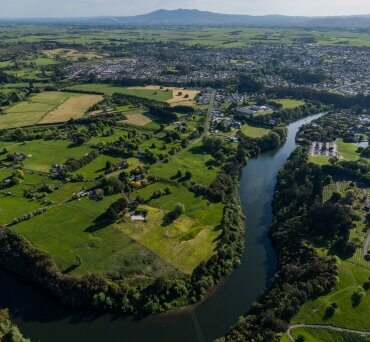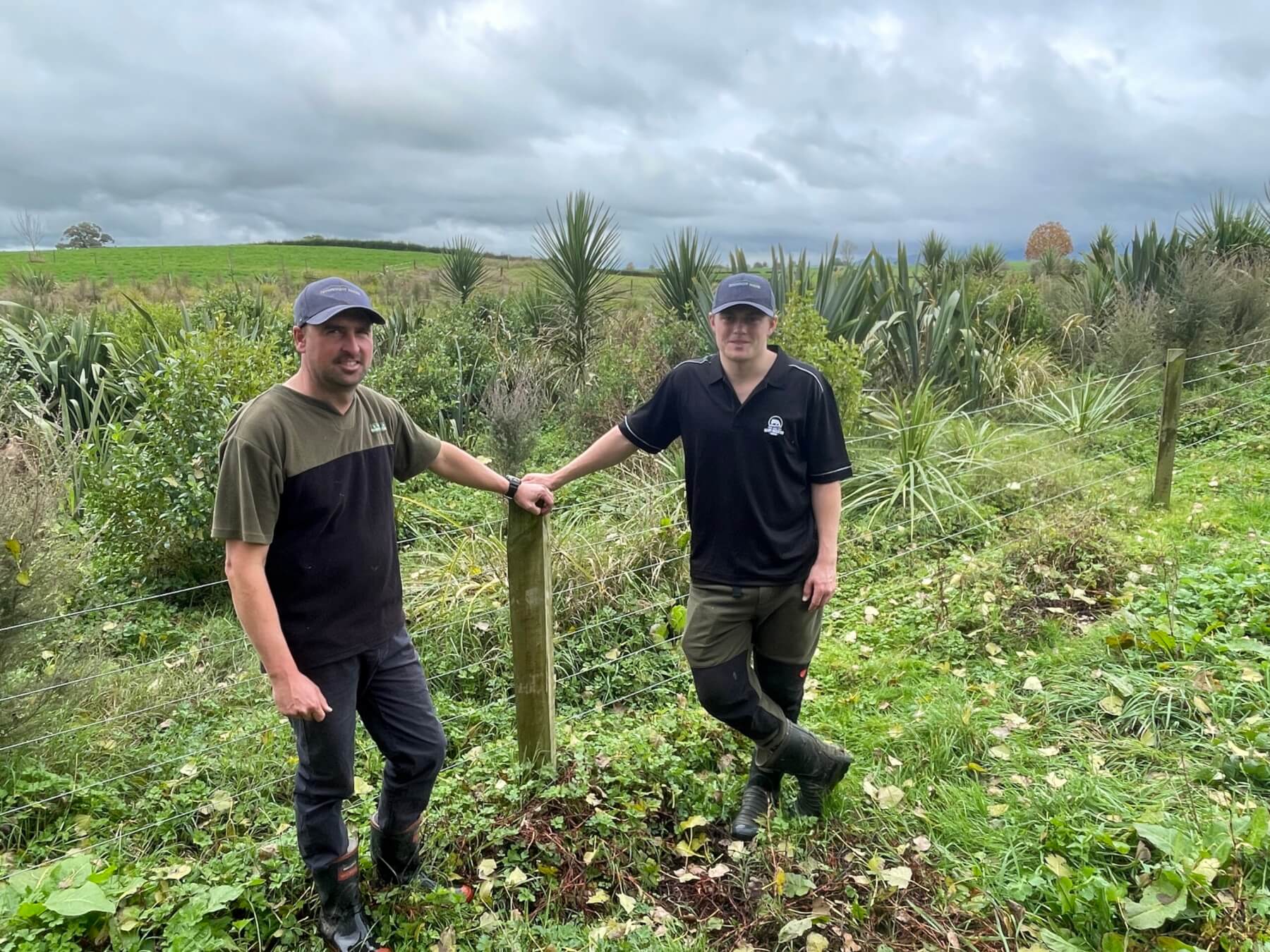
Waikato River
Landowners have “retired” 8442 hectares of riparian or erosion prone land in the Waikato Regional Council area over seven years a new report says.
At 8442ha – that’s 84.42 square kilometres – it’s bigger than Cambridge, 27.35 square kilometres, Pirongia, 3.27, Ōhaupō, 1.54, Te Awamutu, 14.18, Kihikihi, 3.4, Ōtorohanga, 5.07, Te Kūiti, 8.41km and Piopio, 2.01, townships combined.

Hamish Germann, left, with Kirwyn Ellis with Nithmount Farm riparian planting
See: Born to be a farmer
The figure was quoted by Waikato West Coast Catchments manager Grant Blackie addressing councillors at an Integrated Catchment Management Committee meeting last week
Over seven years the council has worked with landowners and iwi to complete almost 1600km of fencing, retiring 8442ha of riparian or erosion prone land and planting over 4.5 million plants, he said.
Rural landowners battling rising farm expense and reduced profit in the 2023-24 year gave up almost 1000 hectares of land on 296 properties for conservation.
It was a marked reduction down on the previous year, but “a pretty significant amount of work in these trying circumstances,” Blackie said.
His report said landowners collectively completed nearly 150 kilometres of fencing, planted nearly 450,000 plants and retired nearly 940 ha of land.
In comparison, but with higher levels of funding, in 2022-23 the council worked with 341 landowners to retire 1726ha of land, plant 950,000 native trees and protect 137km of waterways.
Incentivised catchment work comes with funding from council, Waikato River Authority and the Ministry for Primary Industries.
“Despite an excellent grass growing year, the most common reason given by landowners to delaying work relates to lower discretionary farm income, resulting from a combination of poor returns, high ‘farm gate’ inflation and increases in debt-servicing costs, Blackie’s report said.
“In addition, there is now regulatory uncertainty for landowners relating to freshwater and greenhouse gas emission requirements and the functioning of the emissions trading scheme.”
Waikato Regional Council undertakes river and catchment planning and management activities within zones based on catchment boundaries.
The council’s catchment programmes deliver restoration works, including soil erosion control and prevention, river management work, riparian protection through fencing and planting, lake and wetland protection and enhancement and bush fragment protection.
In 2023-24, the council also received significant co-funding for river management work from the government in response to the impact of Cyclone Gabrielle and other North Island storms.
The amount of funding available to landowners depends on whether landowners are in an identified priority catchment and whether the council has secured additional funding for work programmes outside business as usual.
Funding ranges from 35 to 80 per cent of costs, depending on the location, type of work and funding available, and landowners are able to use their labour and materials contributions as work in kind.

Penney Cameron and her husband Rob planting flax at Lake Ruatuna. Photo: Dion Patterson, Department of Conservation.








